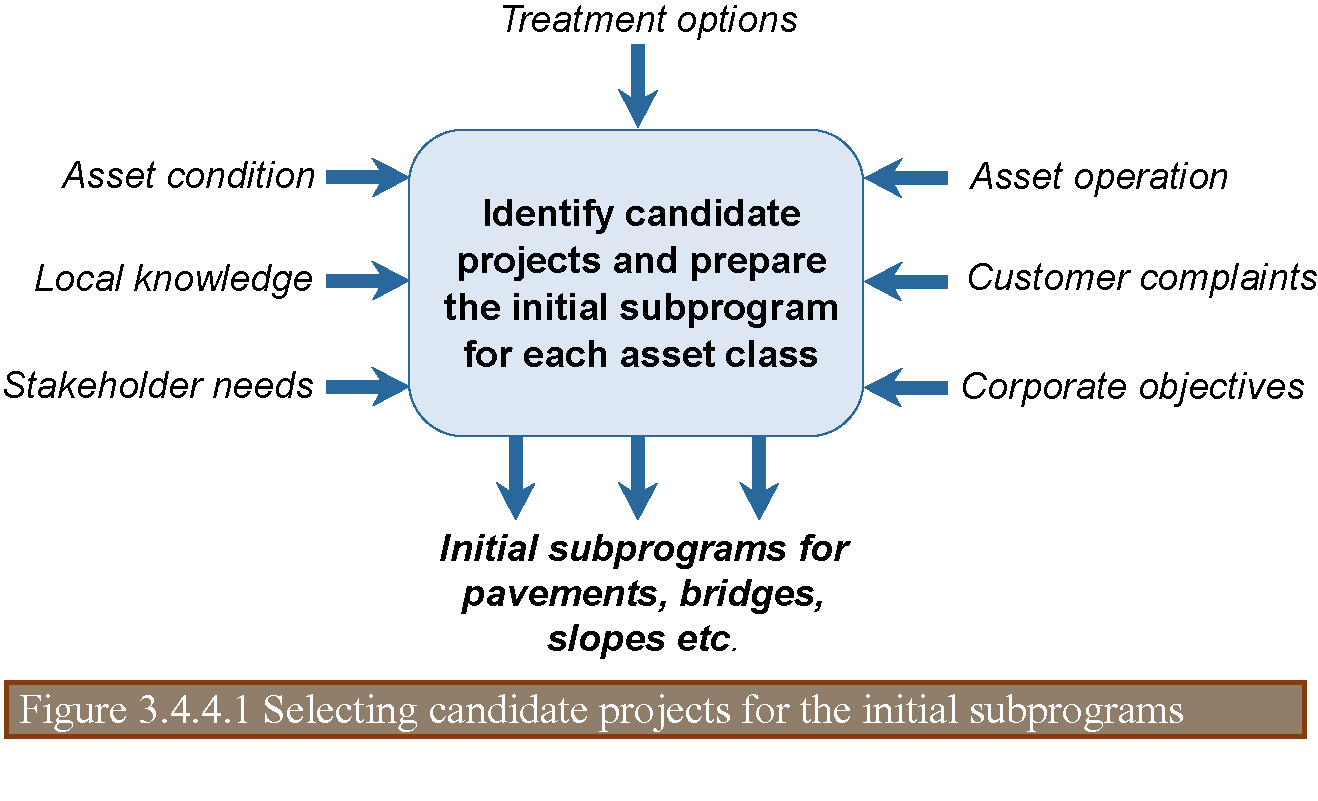
Asset Management Manual
A guide for practitioners!

Asset Management Manual
A guide for practitioners!
The identification of candidate projects implies the analysis of a given asset (e.g., a pavement section or a bridge) to determine what actions, if any, should be taken to maintain or improve its performance (Cambridge Systematics et al. 2002-2). This analysis relies on information sources like the following: condition surveys, safety inspections, knowledge of local staff, stakeholder needs, accident claims, and requirements to meet corporate objectives. Data from condition surveys and safety inspections should ideally be available from the asset management system, in some cases through advanced platforms such as GIS (UKRLG and HMEP 2013)
A comprehensive approach to project identification may include the following steps (Austroads 2002):
In order to define the projects required to close the gaps identified from the above steps, several treatment alternatives may be evaluated for each asset. Road management systems such as pavement, bridge, accident, and other management systems have been developed over the years to streamline the analysis of alternative works. At this stage, evaluation may include assessing the economic benefits of each option, particularly in the case of pavement assets.
The final lists of candidate projects obtained by identifying the optimal intervention option for the various assets may be referred to as the total needs program (Austroads 2009). Figure 3.4.4.1 contains a simplified representation of the programing stage concerning project identification and the preparation of initial programs.
